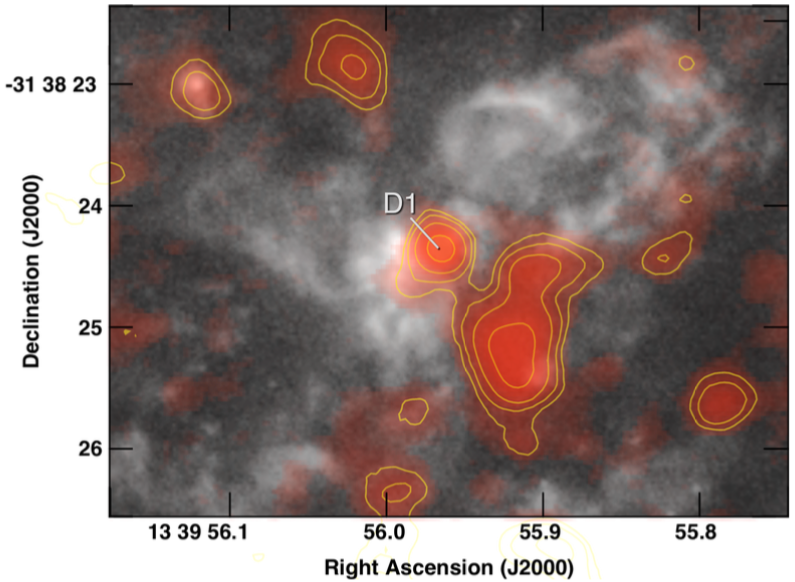Science Highlights - Molecular Gas Within the Supernebula of the Dwarf Galaxy NGC 5253
 |
One of the areas of extragalactic research which makes great use of ALMA's resolution and sensitivity is the study of the molecular gas properties of dwarf galaxies. In a recent study by Dr. Jean Turner and her collaborators, they make use of Band 7 ALMA observations to detect warm 12CO(3-2) and 13CO(3-2) emission (Cloud D1) from the core of a giant star-forming region, in the dwarf galaxy NGC 5253. This "supernebula" is the source of one-third of the galaxy’s infrared luminosity and is in proximity to optical clusters with measured stellar ages of ~ 1 Myr. From radio recombination line analysis, the region is estimated to have 1400-1800 O stars. The authors use the CO data to measure a cloud radius of 2.8 pc and a dynamical mass of 2.5x109 solar masses. The overall gas mass content of this stellar mass-dominated region is estimated to be < 35%, and the derived mass-to-light ratio is consistent with a top heavy IMF. Comparisons with the infrared luminosity-to-molecular gas mass ratio (= the luminosity of massive, imbedded young stars per unit star-forming molecular gas mass) of its closest Galactic analog, W49N, shows the NGC 5253 supernebula region to be ~ 50 times more efficient at forming stars.
|
|
Fig 1. ALMA CO J=3-2 emission in NGC 5253, in color and contours, superimposed on an archival HST Hα image. The ALMA beam is 0.33" × 0.27", p.a. -90.0 (6 pc × 5 pc). The larger CO cloud to the southwest of D1 is ∼15-20 pc away and redshifted with respect to D1. Cloud D1, which is the focus of this paper, is coincident with the radio continuum nebula emission. |
| Past Science Highlights |
